Solar oven cooking times vary greatly compared to conventional ovens. You'll need to allow more time for most dishes: rice takes 1-2 hours, beans 2-3 hours, and chicken 2-4 hours depending on size. Factors like sunlight intensity, oven type, and food quantity affect cooking duration. To optimize efficiency, use dark cookware, preheat your oven, and position it towards the sun. Weather and seasons also play a role, with summer offering faster cooking times than winter. While solar cooking requires patience, it's eco-friendly and safe. By understanding these variables, you'll be better equipped to plan and execute your solar meals successfully.
Factors Affecting Solar Cooking Times
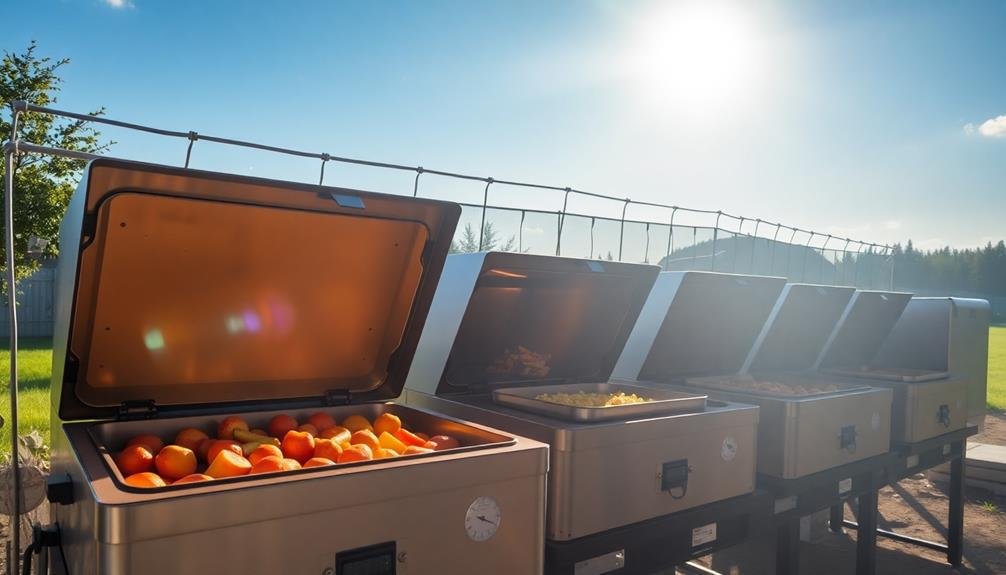
When using a solar oven, several key factors influence your cooking times. The most notable is the intensity of sunlight, which varies depending on the time of day, season, and weather conditions. You'll find that cooking is faster during peak sun hours, typically between 10 am and 2 pm.
The type and size of your solar oven also play an essential role. Parabolic cookers generally heat up faster than box ovens, while larger ovens may take longer to reach ideal temperatures.
The color and material of your cookware matter too; dark, thin-walled pots absorb heat more efficiently.
The quantity and type of food you're cooking will affect times as well. Larger portions and denser foods require more time, while liquids heat up quicker. Preheating your oven and cutting food into smaller pieces can speed up the process.
Ambient temperature and wind conditions impact cooking times. Cold or windy days will slow down your cooking, so you'll need to adjust accordingly.
Common Foods and Cooking Durations
A handy guide to solar oven cooking times can help you plan your meals effectively. While exact durations may vary based on factors like sunlight intensity and oven design, here's a general overview of common foods and their approximate cooking times in a solar oven:
Rice typically takes 1-2 hours, while beans require 2-3 hours. Vegetables cook relatively quickly, with most varieties ready in 1-1.5 hours.
For meats, chicken pieces usually need 2-3 hours, while a whole chicken can take up to 4 hours. Fish fillets cook in about 1-1.5 hours. Bread and cakes generally require 1-2 hours, depending on their size and complexity.
Keep in mind that preheating your solar oven can greatly reduce cooking times. You'll also want to adjust your expectations for slower cooking compared to conventional ovens.
However, the benefit of solar cooking is that it's nearly impossible to burn or overcook food, making it a forgiving method. As you gain experience, you'll develop a better sense of timing for your specific solar oven and local conditions.
Solar vs. Conventional Oven Comparison
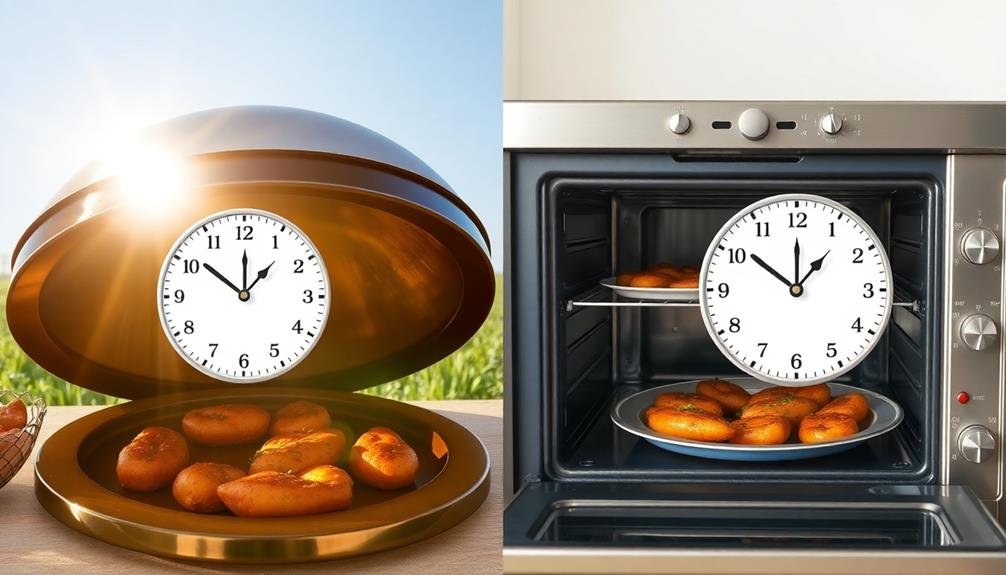
Comparing solar ovens to conventional ovens reveals several key differences in cooking methods and energy consumption.
Solar ovens typically require longer cooking times due to their lower and more variable temperatures. While a conventional oven might bake a chicken in 1-1.5 hours at 350°F, a solar oven could take 2-3 hours on a sunny day.
You'll find that solar ovens are more energy-efficient, using free solar power instead of electricity or gas. They're also safer, as there's no risk of fire or burns from heating elements. However, they're weather-dependent and less precise in temperature control.
Conventional ovens offer consistent results and faster cooking times. They're not affected by weather and can reach higher temperatures quickly. You can use them any time of day or night, which isn't possible with solar ovens.
When choosing between the two, consider your climate, cooking needs, and energy goals. If you're in a sunny area and don't mind longer cooking times, a solar oven can be an eco-friendly option. For quick, reliable results regardless of weather, stick with a conventional oven.
Optimizing Solar Oven Efficiency
To get the most out of your solar oven, you'll need to enhance its efficiency. Start by positioning your oven to face the sun directly, adjusting its angle throughout the day to maximize sunlight exposure.
Use a dark-colored pot or pan to absorb more heat, and cover it with a tight-fitting lid to trap steam and moisture.
Preheat your solar oven for 30 minutes before cooking to guarantee it reaches the ideal temperature. Insulate the oven with reflective materials like aluminum foil to minimize heat loss.
Cut food into smaller, uniform pieces to cook faster and more evenly. Don't open the oven door frequently, as this allows heat to escape and prolongs cooking time.
Consider using a heat-absorbing material, such as a black stone or ceramic tile, inside the oven to retain heat. On partially cloudy days, use a solar funnel or additional reflectors to concentrate sunlight.
Monitor internal temperatures with a thermometer to guarantee food safety. Finally, plan your cooking around peak sunlight hours, typically between 10 am and 2 pm, for the best results.
Seasonal and Weather Considerations
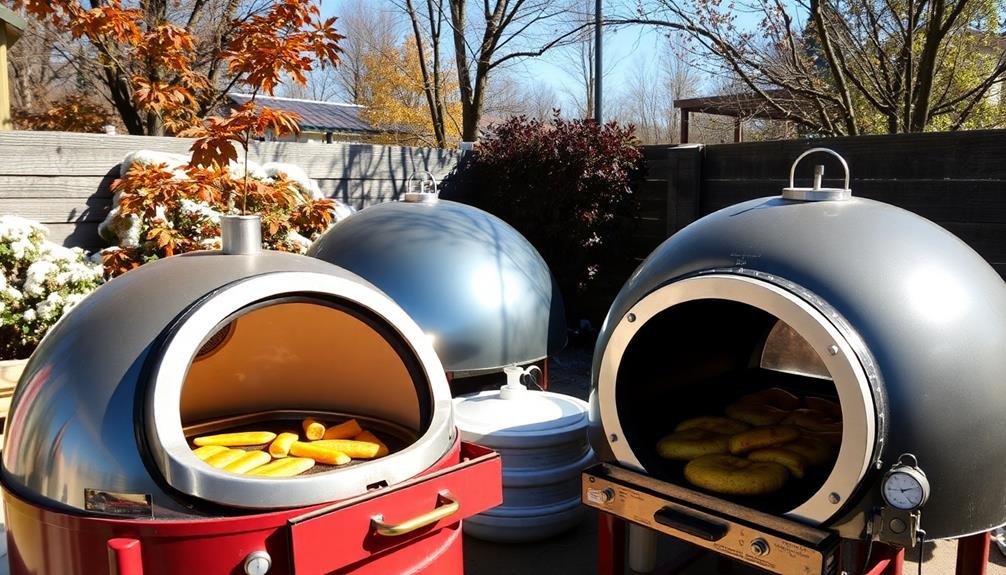
Seasons and weather play an essential role in solar oven cooking times. You'll find that summer months generally offer the best conditions for solar cooking, with longer days and more intense sunlight. During this time, you can expect faster cooking times and higher temperatures in your solar oven.
In spring and fall, you'll need to adjust your expectations. The sun's angle is lower, and days are shorter, resulting in longer cooking times. You may need to start cooking earlier in the day to guarantee your meal is ready by dinnertime.
Winter presents the biggest challenge for solar cooking. With shorter days and weaker sunlight, you'll experience considerably longer cooking times. In some regions, solar cooking may not be feasible during winter months.
Weather conditions also impact cooking times. Clear, sunny days are ideal, while clouds can dramatically slow down the process. Wind can affect your oven's performance by cooling it down, so choose a sheltered location when possible.
To compensate for seasonal and weather variations, you can:
- Use a reflector to increase sunlight capture
- Preheat your oven
- Cut food into smaller pieces
- Insulate your oven for better heat retention
Frequently Asked Questions
Can Solar Ovens Be Used to Bake Bread and Desserts?
Yes, you can bake bread and desserts in solar ovens. They're great for these tasks, as they provide steady, gentle heat. You'll need to adjust cooking times and temperatures, but you'll achieve delicious results with practice.
How Do You Prevent Food From Drying Out in a Solar Oven?
To prevent food from drying out in your solar oven, you'll want to use covered pots or containers. Add a bit of water or broth to dishes, and don't overcook. You can also baste foods occasionally during cooking.
Are Solar Ovens Safe for Cooking All Types of Meat?
You can safely cook all types of meat in a solar oven, but you'll need to guarantee it reaches the proper internal temperature. Use a meat thermometer and follow food safety guidelines to prevent foodborne illnesses.
What Materials Are Best for Constructing a Homemade Solar Oven?
You'll want to use reflective materials like aluminum foil, insulating materials such as cardboard or foam, and a clear plastic or glass cover. Don't forget a dark-colored cooking pot to absorb heat effectively.
Can Solar Ovens Be Used for Canning or Preserving Food?
You can use solar ovens for canning and food preservation, but it's essential to maintain consistent temperatures. While it's possible, you'll need to be extra cautious and monitor the process closely to guarantee food safety standards are met.
In Summary
You've now got a solid grasp on solar oven cooking times. Remember, factors like sunlight intensity and food type will affect your results. Don't be discouraged if it takes longer than conventional methods – you're harnessing free, clean energy! Keep experimenting and optimizing your setup. With practice, you'll become a pro at timing your solar meals just right. Embrace the seasonal changes and enjoy the unique flavors of sun-cooked food year-round.

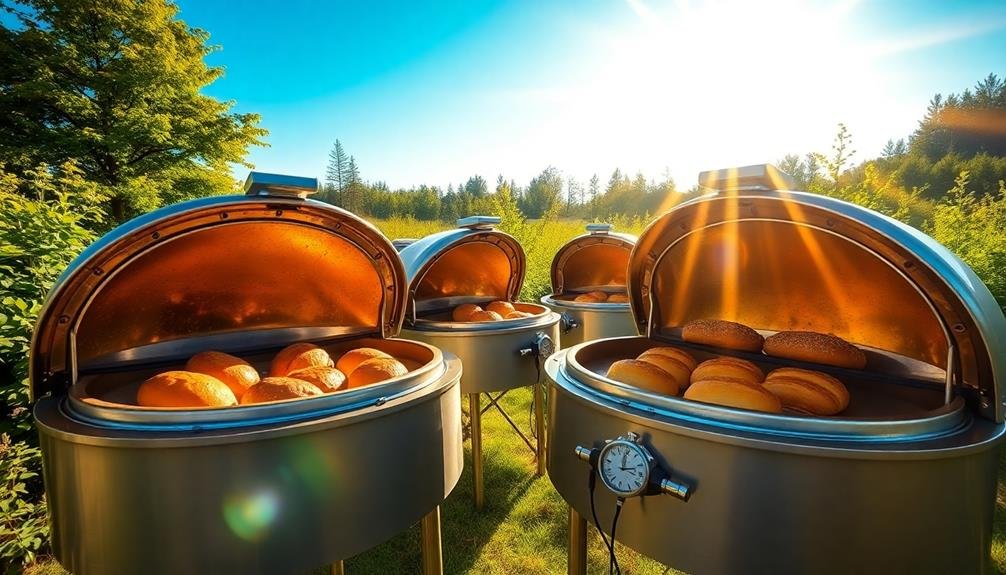
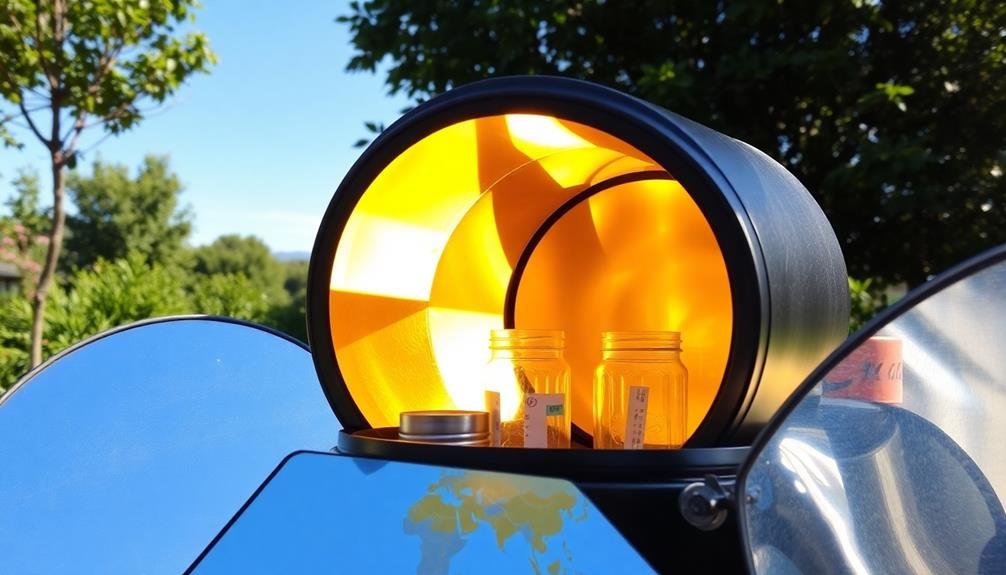
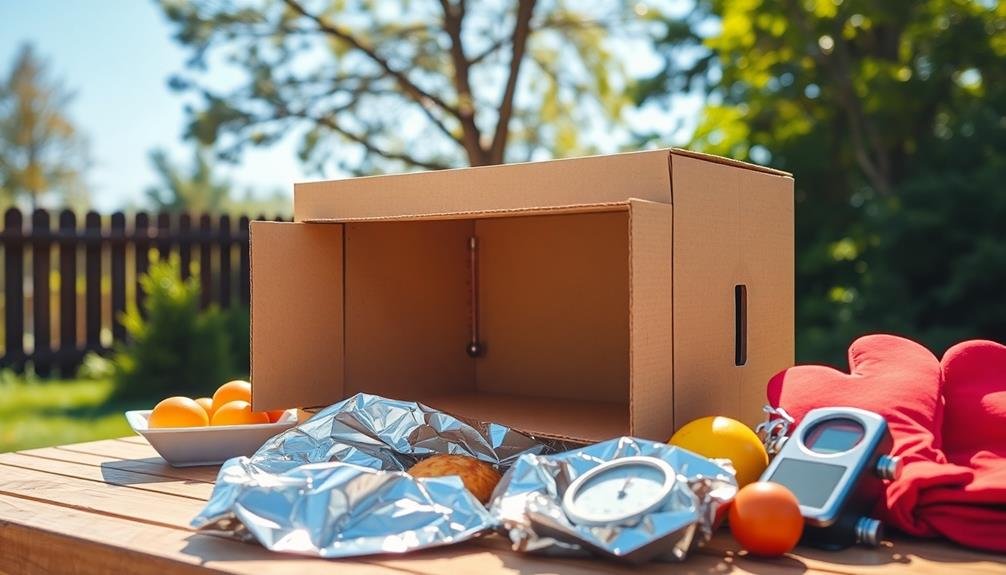
Leave a Reply